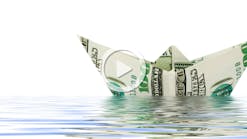Leadership in Energy and Environmental Design (LEED) 2009, the long-awaited update to the internationally recognized LEED green building certification program, has passed member ballot and will be introduced in 2009 as the next major evolution of the existing LEED rating systems for commercial buildings. It includes a series of major technical advancements focused on improving energy efficiency, reducing carbon emissions and addressing other environmental and human health outcomes.
LEED 2009 will also incorporate highly anticipated regional credits--extra points that have been identified as priorities within a project’s given environmental zone. LEED has also undergone a scientifically grounded re-weighting of credits, changing allocation of points among LEED credits to reflect climate change and energy efficiency as urgent priorities. This will be one of the most significant changes to the rating system and will increase the importance of green building as a means of contributing immediate and measurable solutions toward energy independence, climate change mitigation and other global priorities.
LEED 2009 incorporates eight years worth of market and user feedback in the form of precedent-setting credit interpretation rulings, which will ensure clarity for project teams. Coupled with a credit alignment structure designed to create a more elegant and harmonized rating system, LEED 2009 will reset the bar for the certification of high-performance green buildings.
Process innovation in how new technical advancements are incorporated into LEED will also be introduced alongside LEED 2009, including a “pilot process” for individual credits that will allow major new technical developments to be flexibly trialed, evaluated and incorporated into LEED. “The conclusion of the balloting process marks the culmination of tireless work done by representatives from all corners of the building industry,” said Brendan Owens, Vice President, LEED Technical Development, U.S. Green Building Council’s. “We have the deepest gratitude for our volunteer leaders, and for their bold steps towards resetting the bar for green building leadership and challenges the industry to move faster and reach further.”
The first public comment period for LEED 2009 opened in May 2008, followed by a second in late August. The U.S. Green Building Council (USGBC) had received nearly 7,000 comments from members and stakeholders at the conclusion of the second public comment period on Sept. 2. The final step is the consensus development process for LEED 2009 was to be balloted for a pass/fail vote among USGBC’s 18,000 member organizations. LEED 2009 successfully passed member ballot on Nov. 14.
For more information, visit www.usgbc.org.
Source: Environment News Service






